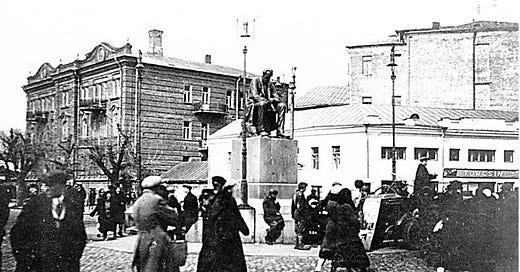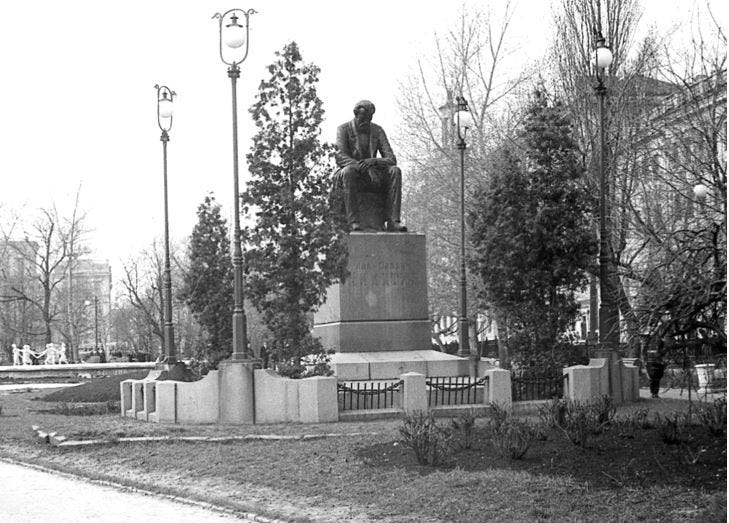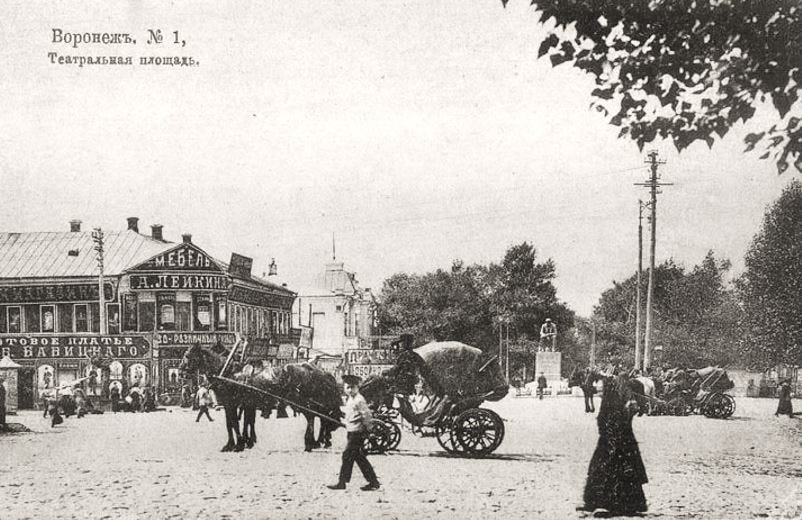Schuklin was born on February 19, 1879 to the family of an iconographer Andrian Ivanovich in the village you can reach on bicycle — Schuklinka. A rare observation and the ability to draw the boy woke up at 5 years old.
By the way, he had a brother and a portrait artist Grigori (we’ll tell about him later, stay tuned :).
When Ivan was 7, his family decided to send him to Yamskaya1 junior school2, then was studied at an uezd school (a county school) alongside mastering his drawing skills. At the second (final) year he could make a good drawing and no teacher could help with fixing a line — everything was so well done. The boy’s works were distinguished for the fascinating interplay between light and shade and a stricking resemblance to the object of the picture.
Ivan Schuklin was 16 years old when he joined Moscow School of Painting, Sculpture and Architecture (the MSPSA) and already performed incredibly was exempted from paying tuitions.
Under the circumstances Schuklin was obliged to switch from fine art classes to sculpture. Having graduated from the MSPSA in 1901, he received a medal and the title of the artist, then returned to Kursk. Since then Ivan Schuklin had been living there for 2 years, making great efforts in drawing and sculpture.
In 1905 Ivan Andrianovich Schuklin arrived in the Petersburg Academy of Arts and later the same year received a letter from the MSPSA with a scholarship for the etude “The Naked Woman”. For a year Ivan had enhanced his skills in Italy.
Soon after his return, the artist received an order to create the sculpture devoted to Ivan Nikitin3. He managed to do it in time and nailed his competitive academic art work “The Grief of Orpheus”.
“The Grief…” brought him the highest award — a trip abroad. Also this masterpiece you can see only at the Petersburg Academy of Arts.
Ivan Schuklin finished his studies in 1910 and stayed in Petersburg for a while — he’d waited for the final touches to the moulding pieces for the Nikitin sculpture. Later and upto the 1913 he lived in Kursk. During this period he’d joined his brother’s the Kursk Association of Artists. In the November of 1913 he was again awarded with a scholarship to France and stayed there till his last days working in Spain and sometimes receiving orders for the art work from the USA buyers. He had a very poor correspondence with his parents and brother for being away as immigrant after the Russian Revolution.
After living in France for 40 years, Ivan Schuklin decided to return to Kursk, he even could make a Soviet passport but… passed away unexpectedly in 1958.4
It was located in Yamskaya sloboda being out of the Kursk authority control. The word is derived from “яма” a place where peasants working as postal clerk lived (they received a part of teritory where they could have a garden and build a house) that delivered things here and there from one town to another, from one home to the other.
It’s incredible that the building has been saved with time (when you take the 1 tram, you should look to the right before aproached the Blue church).
A Russian poet was born in 1824 and died in 1862 in Voronezh. His poetry is so musical, so many composers used the lyrics for the romances.







